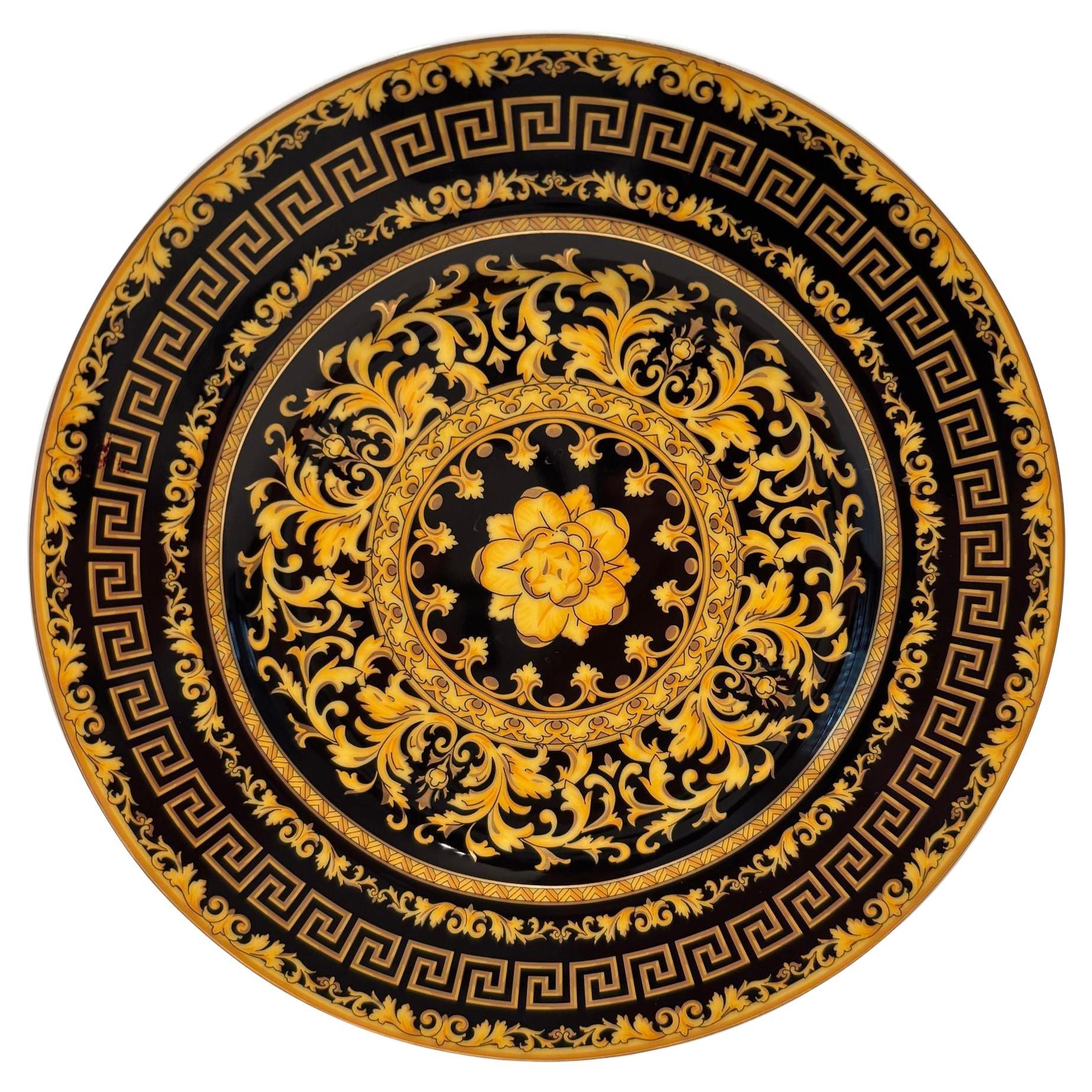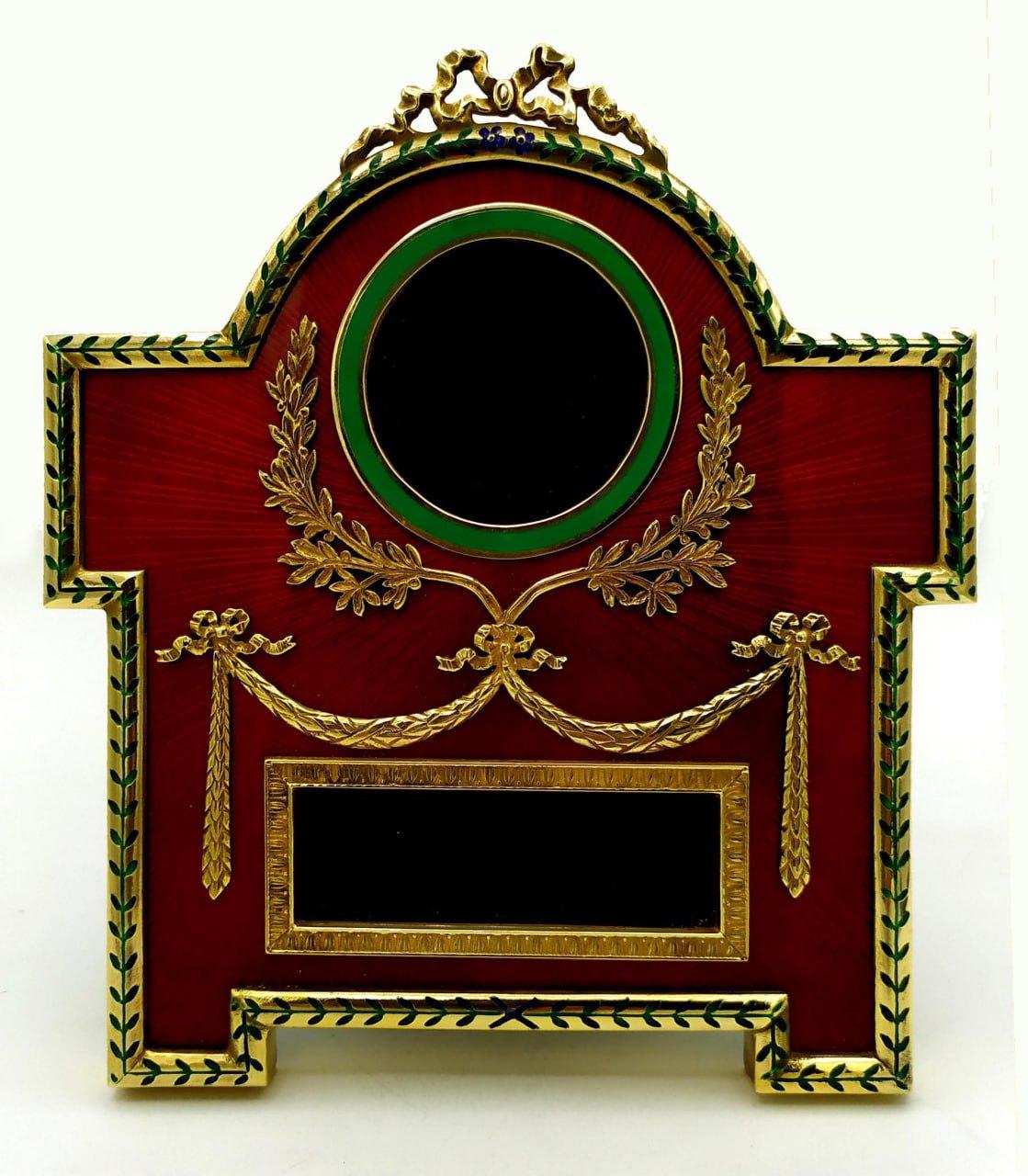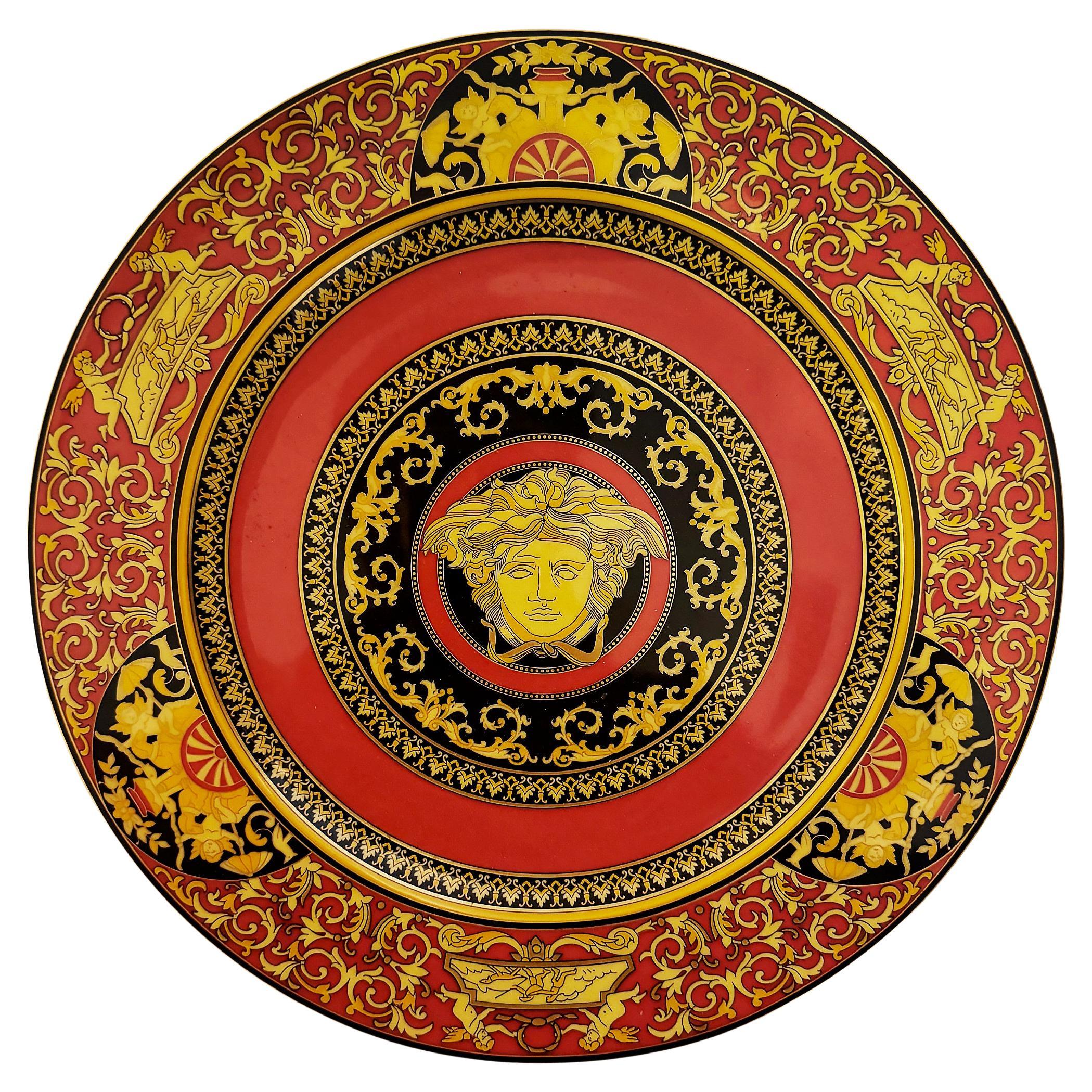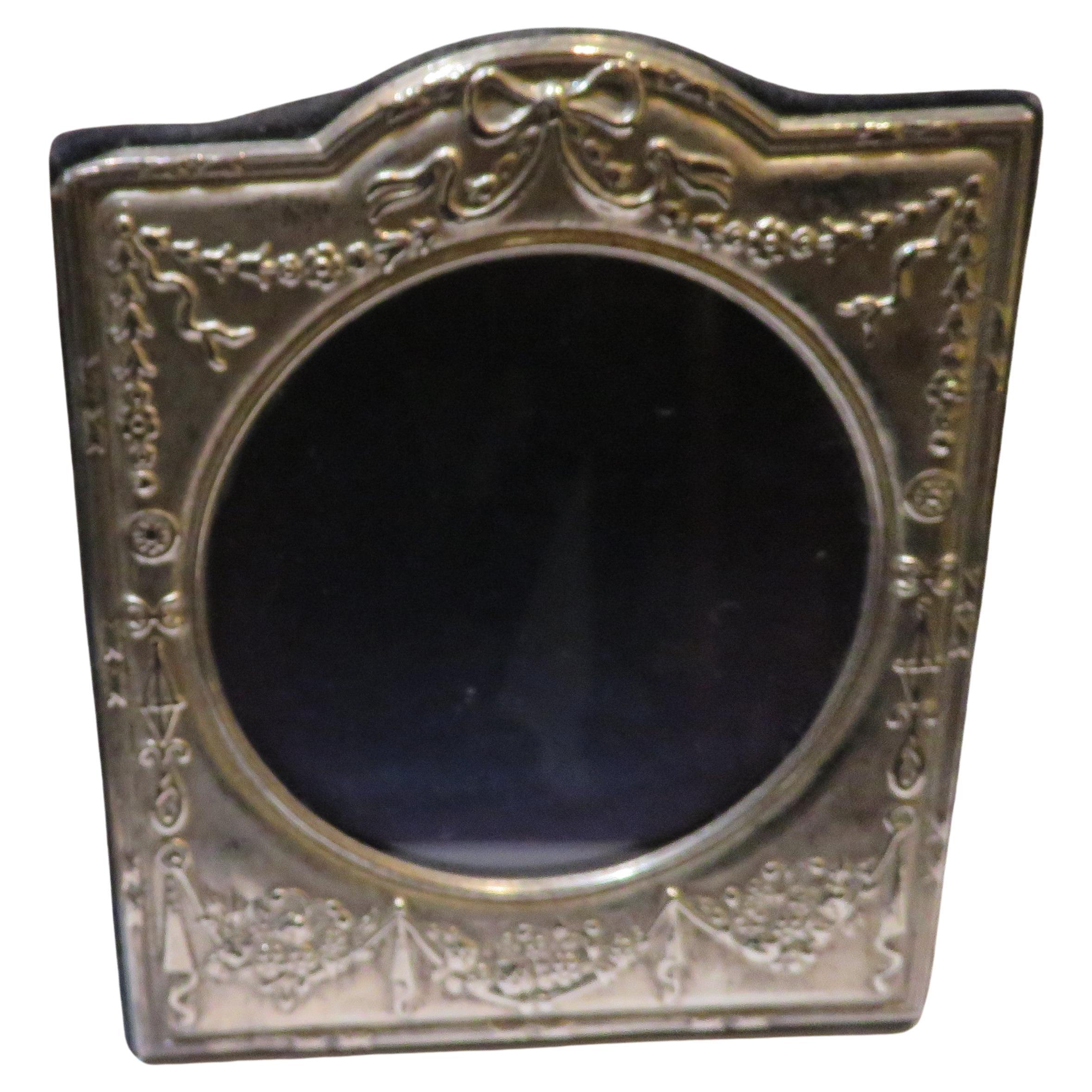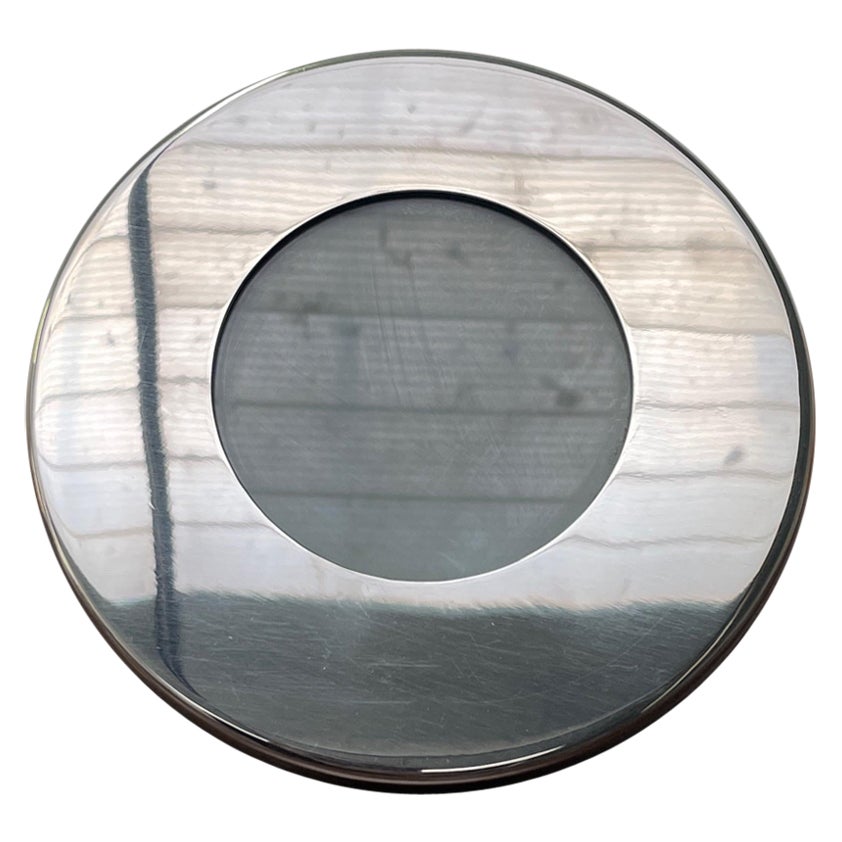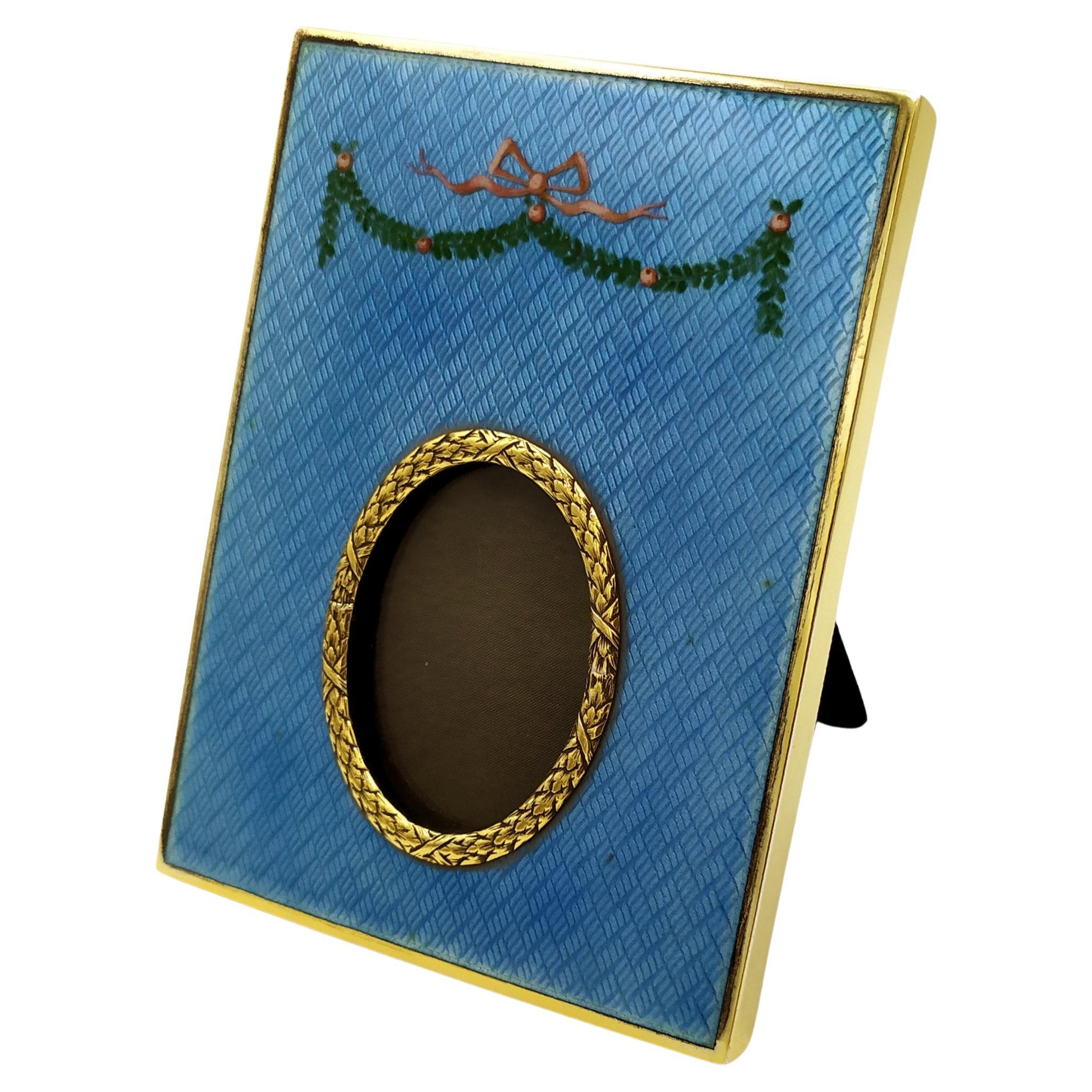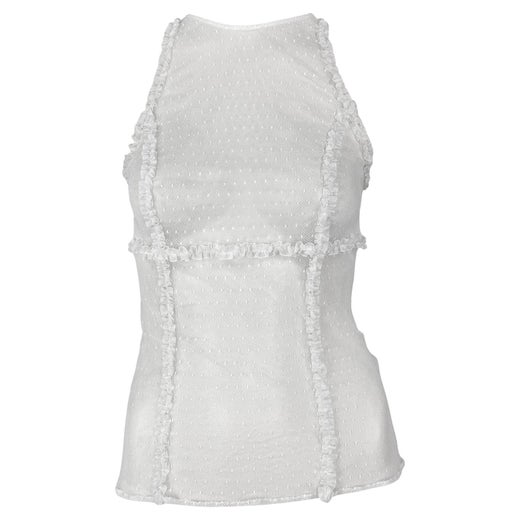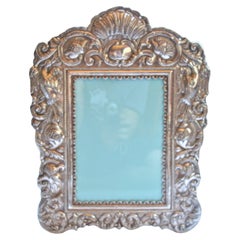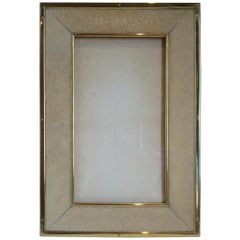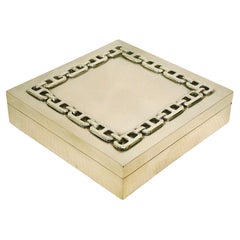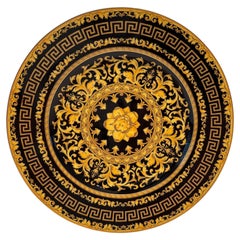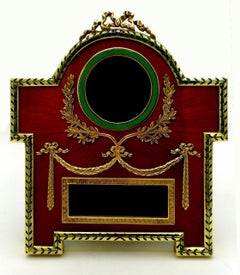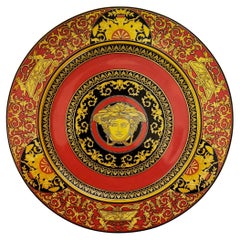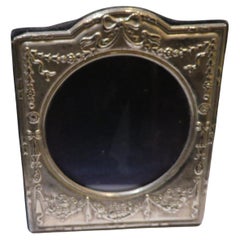Gianni Versace Sterling Silver Round Photograph / Photo / Picture Frame 1990´s
About the Item
- Creator:Gianni Versace (Artist)
- Dimensions:Height: 1.03 in (2.6 cm)Diameter: 9.97 in (25.3 cm)
- Style:Greek Revival (In the Style Of)
- Materials and Techniques:
- Place of Origin:
- Period:1990-1999
- Date of Manufacture:1990´s
- Condition:Wear consistent with age and use. it has some old glue of a sticker on the back, under the foot.
- Seller Location:Buenos Aires, AR
- Reference Number:1stDibs: LU2027345189022
Gianni Versace
The signature extravagance of legendary fashion designer Gianni Versace — forever aligned with glamour, sex, celebrity and spectacle — can overshadow the Italian couturier’s broad and deep engagement with history and culture. Today, his vintage dresses and gowns, handbags, sunglasses and other accessories look astonishingly fresh and freshly relevant.
More than any designer before him, Versace mined celebrity, music and Pop art for inspiration, and his subversive, maximalist and unabashedly seductive designs infused high fashion with an entirely new ethos. “I don’t believe in good taste,” he once explained. Instead, he had a sexy good time with fashion — as he did with life.
Gianni Versace was born in Calabria, Italy. His mother was a successful dressmaker who employed more than 40 seamstresses. As a child, little Gianni marveled at her workshop, which would become a university of sorts, where he learned the exceptional construction techniques that were at the foundation of his creative expression.
In 1972, at age 25, he moved to Milan to work in fashion. He launched his first collection — and his label — in 1978, with his older brother Santo managing the business concerns. Soon, sister Donatella, whom Gianni dressed and took to discos when she was still a child, joined the family venture, where she had a creative role and managed enormously popular ready-to-wear lines such as Versus.
Vintage Versace — and Gianni Versace Couture, which debuted in 1989 — has become catnip for modern fashion enthusiasts who seek out the now-iconic house codes that originated in the designs of the 1980s and 1990s. His glamorous and seductive apparel — the clingy skirts and slender, strappy party dresses, as well as the erotic magazine ads that publicized them — looms large, but Versace’s art and historical influences were also vast.
Versace was an art collector, and he took on commissions to create costumes for theatrical performances during the 1980s and spoke of looking to numerous cultures for inspiration. The New York Times noted in 1997 that the fashion industry “is now driven by contemporary culture because Mr. Versace made it that way.”
Insiders consider his 1991/1992 Autumn/Winter runway show — which featured supermodels Christy Turlington, Cindy Crawford, Naomi Campbell and Linda Evangelista lip-synching George Michael’s “Freedom” — as the moment when the two worlds of fashion and pop culture became one, changing both forever.
Versace's adventurous spirit of design resulted in his creating jewel-toned prints rooted in Grecian motifs, Etruscan symbols, the Italian Baroque and Andy Warholʼs Marilyn Monroe. There were slinky dresses in Oroton, his patented chain-mail textile that draped like satin, and leather bondage ensembles. Sex sold, for both women and men. Wrote the late curator Richard Martin, “[Versace] became the standard-bearer of gay men’s fashion because he eschewed decorum and designed for desire.”
Following Versace’s tragic murder in 1997, Donatella took over the role of artistic director and continued to evolve the house codes with a twist of her feminine and feminist perspective. Today, Santo Versace is chief executive officer of Versace and Donatella is its chief creative officer.
Browse an extraordinary collection of vintage Gianni Versace evening dresses, handbags, day dresses and more on 1stDibs.
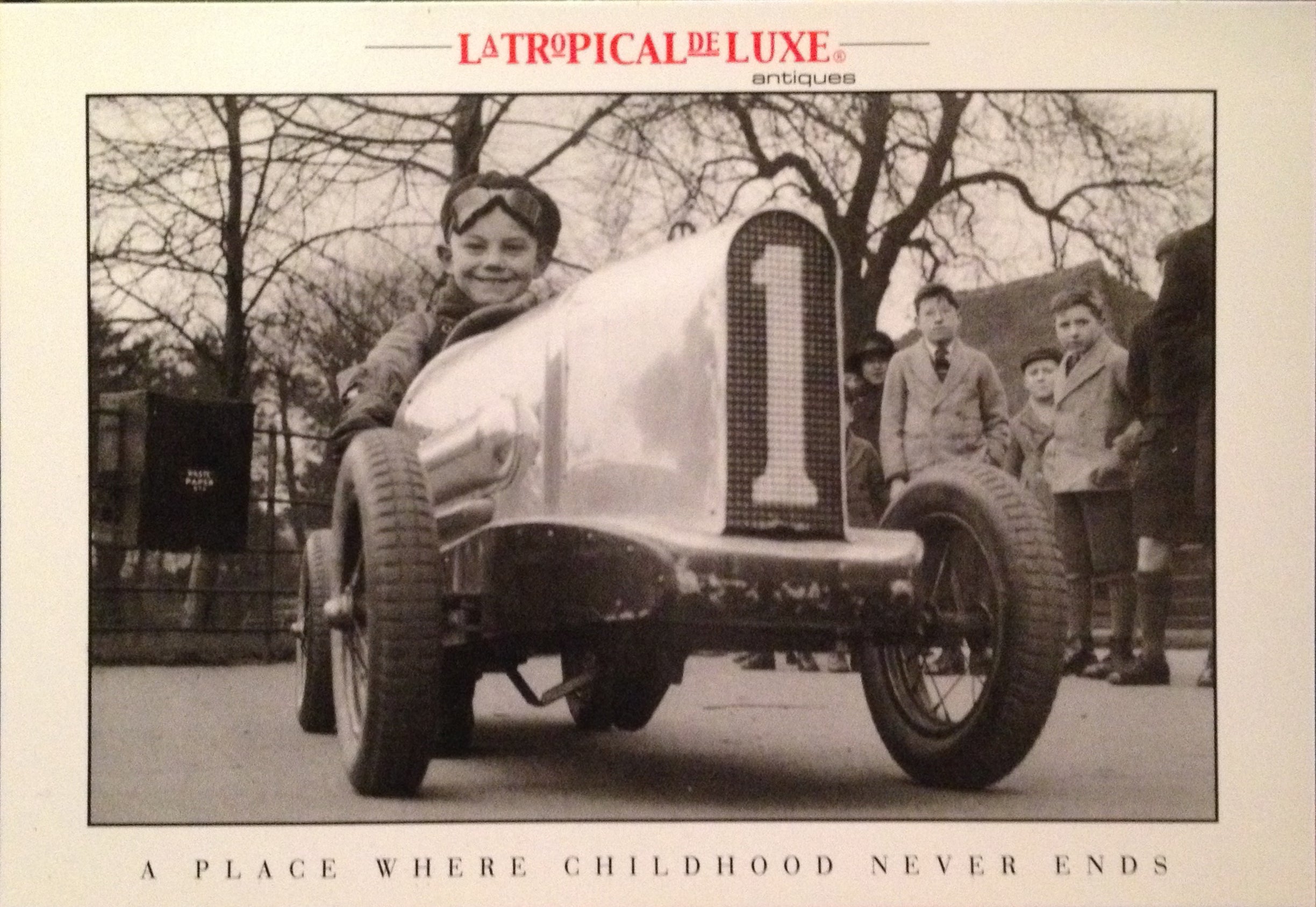
- ShippingRetrieving quote...Shipping from: Buenos Aires, Argentina
- Return Policy
More From This Seller
View AllMid-20th Century Argentine Spanish Colonial Sterling Silver
Silver, Sterling Silver
Early 20th Century French Art Deco Picture Frames
Leather
Early 20th Century British Arts and Crafts Sterling Silver
Sterling Silver, Enamel
Late 20th Century Italian Mid-Century Modern Decorative Boxes
Silver
Early 2000s French Modern Glass
Glass, Plastic
1990s Thai Mid-Century Modern Sterling Silver
Sterling Silver, Enamel, Gold
You May Also Like
Late 20th Century Italian Baroque Revival Mounted Objects
Porcelain
Vintage 1960s Italian Art Nouveau Sterling Silver
Gold, Gold Plate, Sterling Silver, Enamel
Late 20th Century Serving Pieces
Porcelain
20th Century English Frames
Silver
Vintage 1970s Italian Mid-Century Modern Picture Frames
Nickel
Vintage 1970s Italian Empire Sterling Silver
Gold Plate, Sterling Silver, Enamel
